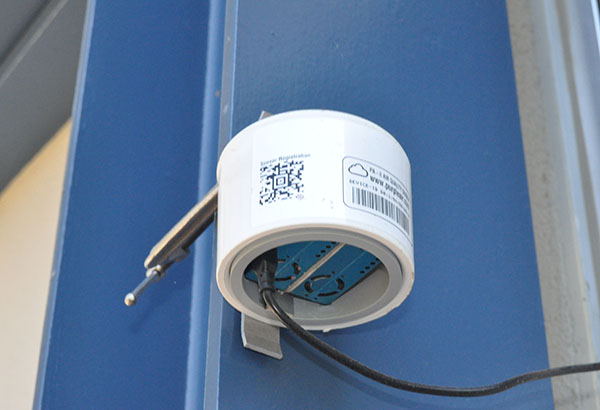Air Quality Detector Installed on Campus

October 19, 2018
A PM 2.5 Detector, which keeps track of the level of fine particulate matter smaller than 2.5 microns, which are the result of the combustion of fossil fuels from car engines, school buses, and power plants, has been provided to Campolindo by Sustainable Lafayette.
The average PM 2.5 particle is about 2.5 microns in diameter, meaning that around 20 particles can fit inside a single human hair.
Science teacher Tren Kauzer said it’s especially important to monitor these particles because “the students, who have developing lungs and are more vulnerable to things like asthma, are here every day.”
“What’s dangerous about them is that they can get into your bloodstream and straight to your brain,” added Kauzer.
According to science teacher Jane Kelson, Sustainable Lafayette came to Campolindo and decided to donate the monitor because they recognized the school’s active Environmental club and AP Environmental Science class. She said these students “study air quality in great detail, and [Sustainable Lafayette] realized that we would actually use the data from the detector.”
Kelson said the new device will be utilized by a variety of science classes. “When [the APES classes] study air quality we look at it, and the geology classes use it as well,” said Kelson.
The detector will post data to a website called Purple Air approximately every 20 seconds. Though numbers in the website’s data frequently change, they normally stay in a specific range unless there is a specific event that might change air quality.
The range of the PM 2.5 Detector is 0-500 micrograms of PM 2.5 per cubic meter, with 0 being the best and 500 being nearly toxic. Most results from 200+ mean that the entire population in the area will be affected by the air quality.
While campus air quality averages 8-20, which is considered safe, Moraga air quality reached 82 in late September due to fires, affecting small groups of at-risk individuals.
Freshman Leah Frankenfield said that it is “scary that we have to monitor that now.”
However, Kelson confirmed that Moraga air quality remains healthy for students. “Our air quality in Moraga and the Bay Area, in general, is very good because we’ve worked very hard to make our air quality good,” said Kelson.
“I think a lot of people just take [good air quality] for granted,” said Kauzer. “They don’t realize how negative these small particles can actually be, and so most people know air pollution is bad, but they don’t know that it can lead to increased rates of heart failure and stuff like that. There are many negative effects that we don’t talk about.”
Kelson feels that the addition of this detector will ultimately benefit the school and continue to fulfill its educational purpose. “It’s interesting to watch the data right here live on campus, which is why it is great to have that detector,” said Kelson.



